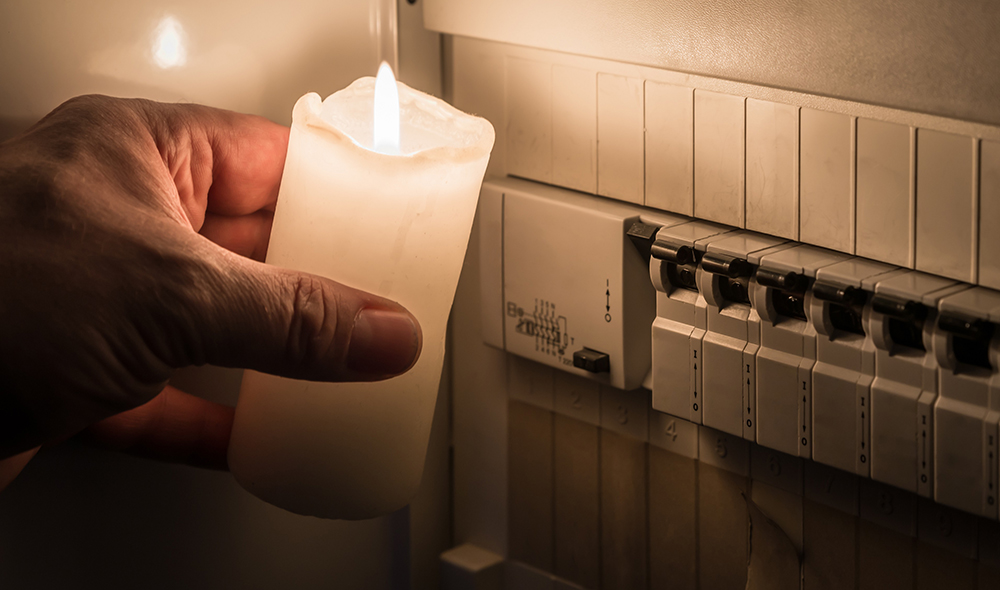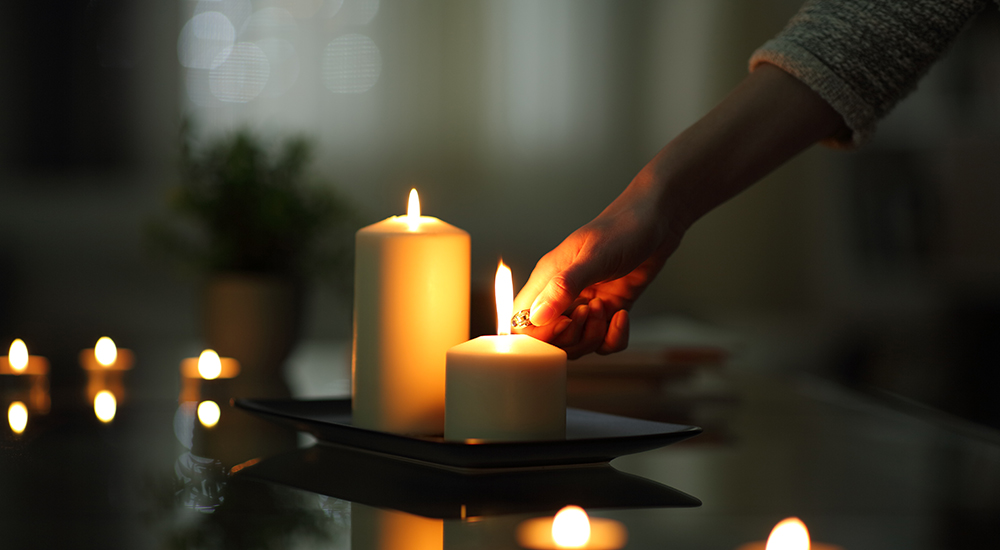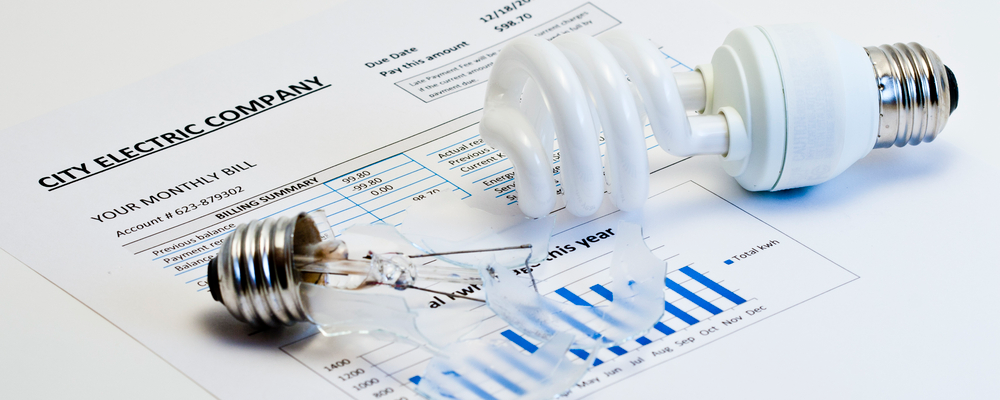Power Outages: How Do Brownout and Blackout Differ?

The U.S. has an electrical grid that is national pride. With over 120,000 miles of power cables and over 500 power supply companies working on it, it is one of the most advanced and complex in the world. However, even this electrical grid is not without faults.
Any energy provider will inform you that power lines are prone to failure, which can result in power outages and other disruptions to the power supply. Power lines and equipment failure can damage electrical appliances in your home, so to learn how to protect yourself from power outages, read on.
What Is a Brownout?
Unlike blackouts, a brownout does not mean that there is no electricity in the electric grid. Your electrical system keeps working, as the power plants delivering power to your area keep running. However, due to peak power demands, such as in severe weather, electricity consumption increases, and the voltage in the electrical grid system drops significantly.
What Are Blackouts?
Blackouts are intentional or unintentional drops in electrical service. They are usually planned and are carried out to preserve the network and large-scale equipment failure. In the winter of 2020/2021, Texas experienced a complete blackout due to severe weather. Every utility company working in this state realized that the electricity demand was way higher than electricity production, so blackouts were introduced to protect the costly equipment.
Brownout vs Blackout
As stated above, a brownout and a blackout are different. During a brownout, your house still receives some power, but the system voltage is much lower than it should be. During a blackout, you receive no power at all. While a brownout may seem better, you should know that it can damage your more sensitive equipment.
Causes
Both brownouts and blackouts are caused by increased electricity demand. In this case, your utility company can introduce brownouts to help stabilize the power grid and to decrease the pressure on more sensitive equipment. Blackouts are caused by a complete shut-off of parts or the entire power grid, in which case there is no power at all. Blackouts can happen due to severe weather. Brownouts are an intentional or unintentional drop in the voltage of the network.
Precaution
Brownouts can be intentionally or unintentionally introduced. They are a form of protection of the power grid, but they can also be a result of a large consumer being turned on, which can bring the power consumption close to the total system capacity and increase your power bill. This is the case with large electric motors, such as those found in water pumps.
Precautions during a brownout:
- Unplug all your devices with the first flicker/circuit breaker;
- Reduce your overall power consumption;
- Install Uninterruptible Power Supply (UPS) and other devices that can offset electrical system changes; and
- Spread out your power use: this will result in load reduction.
Precautions during a blackout:
- Reduce your energy usage – unplug all devices (this will also help protect them in case of a power surge once your electricity company reestablishes the electrical flow),
- Trim the trees around the electric lines – contact your energy providers for more information on safety,
- Invest in a smart meter and digital control circuits – this can help with voltage reduction during power surges,
- Make a timetable for your power use at home – big appliances such as your water heater should be turned on when the power use is low, such as at night,
- Emergency plan – make sure to have plans when an emergency of a brownout occurs.
Prevention
Utility companies and power companies often talk about the prevention of energy use that is too high as a measure to prevent a power outage. However, they tell little on how to do it. To learn more, read on about the brownout and blackout prevention measures to avoid complete interruption:
- Reduce your power consumption – make sure to use energy-efficient gadgets, such as LED lights and Energy-Star rated appliances,
- Keep updated – listen for an advance warning about planned blackouts,
- Use alternative sources of energy in an emergency – a small solar array or a small chimney-type wind turbine can run a few vital devices,
- Temporarily turn off your devices until voltage returns – even for a few minutes when you notice reduced voltages, you should temporarily turn off your devices for safety.
- Always keep a supply of energy – battery-powered flashlights, a hot water tank full of hot water, your Tesla Powerwall batteries, and even a tub full of water can help you in times with no electricity.
Appliances Complications
Unintentional or intentional brownouts can be very dangerous for your appliances, as sometimes, sudden spikes when more electricity is delivered by your utility provider may happen. In the case of electric devices, such as computers, even a temporary reduction of the precise voltages that they run on can cause a lot of issues and even a complete loss of an appliance. In a blackout, this generally does not happen, although the danger of sudden spikes, even with planned outages, still exists.
Electrical Conditions
In many service areas, brownouts and blackouts can happen on short notice and last a short period. The reduced voltage is usually present in some service areas, while others may be left unaffected. Power outages are sometimes deliberately produced to protect the power grid, such as during hottest summer days, when all of your cooling electronics may be working at their full capacity. This can also happen during winter, especially in colder climates, as any heat generator uses a lot of electricity.
What Is a Rolling Blackout, and How Does It Work?

Rolling blackouts are a form of planned outages when the utility company switches off some areas for a while, usually one hour. This is done to reduce the load on the power grid. Your local utility will usually give notice about outages in your service area as well as when natural disasters are expected. Rolling blackouts are your friend, as they improve the power grid reliability and prevent equipment failure.
Who to Contact During a Blackout or Brownout?
If a blackout or a brownout occurs, you should first contact your local utility company. Here, you can report the outage and ask about the planned restoration of the service. You can also ask for advice on how to prevent potential damage to your home appliances.
If the backout or the brownout did not originate on the grid, it is probably a faulty electrical line in your house as well. These occur frequently, so make sure you have an electrician’s phone number handy in case these interruptions occur. You can also have the electrician inspect your electrical systems and fix any problems to prevent future outages.
FAQs
Can a brownout damage a refrigerator?
Yes, a brownout can damage a refrigerator. A brownout means a temporary difference in the voltage. If the voltage is lower than normal, your fridge will not function properly. If it is higher, the fine circuits can get fried. Your fridge uses little power, but it still needs a jolt to start up.
How long do brownouts usually last?
A typical brownout lasts between several minutes to several hours. During this time, your lights may flicker. You should unplug all your appliances and reduce power consumption by using energy only as needed.
Why is it called a brown out?
During a brownout, your lights may flicker and be brown-toned 一 this is where the term brownout comes from. The difference in the voltage can even damage your LED lights and sensitive electronics, so make sure to cut off supply to any device you would not like to lose.
Does unplugging things save money?
Yes, unplugging things can save money. Although most appliances consume only a few watt-hours of energy when not turned on, this use adds up and can be a noticeable item on your average power bill. To help control your bill and energy use more effectively, invest in a multi-plug power strip and shut off all unnecessary devices at once.
Conclusion
The brownout vs. blackout debate is far from a difficult one: brownouts mean that you still get some power and can damage your electronics. Blackouts mean no power but can still cause damage if there is a sudden increase in the system voltage once the power outage is over. In case you have any more concerns about outages, contact your utility company and see what you can do to protect the power lines and power supply in your area.
Updated on




